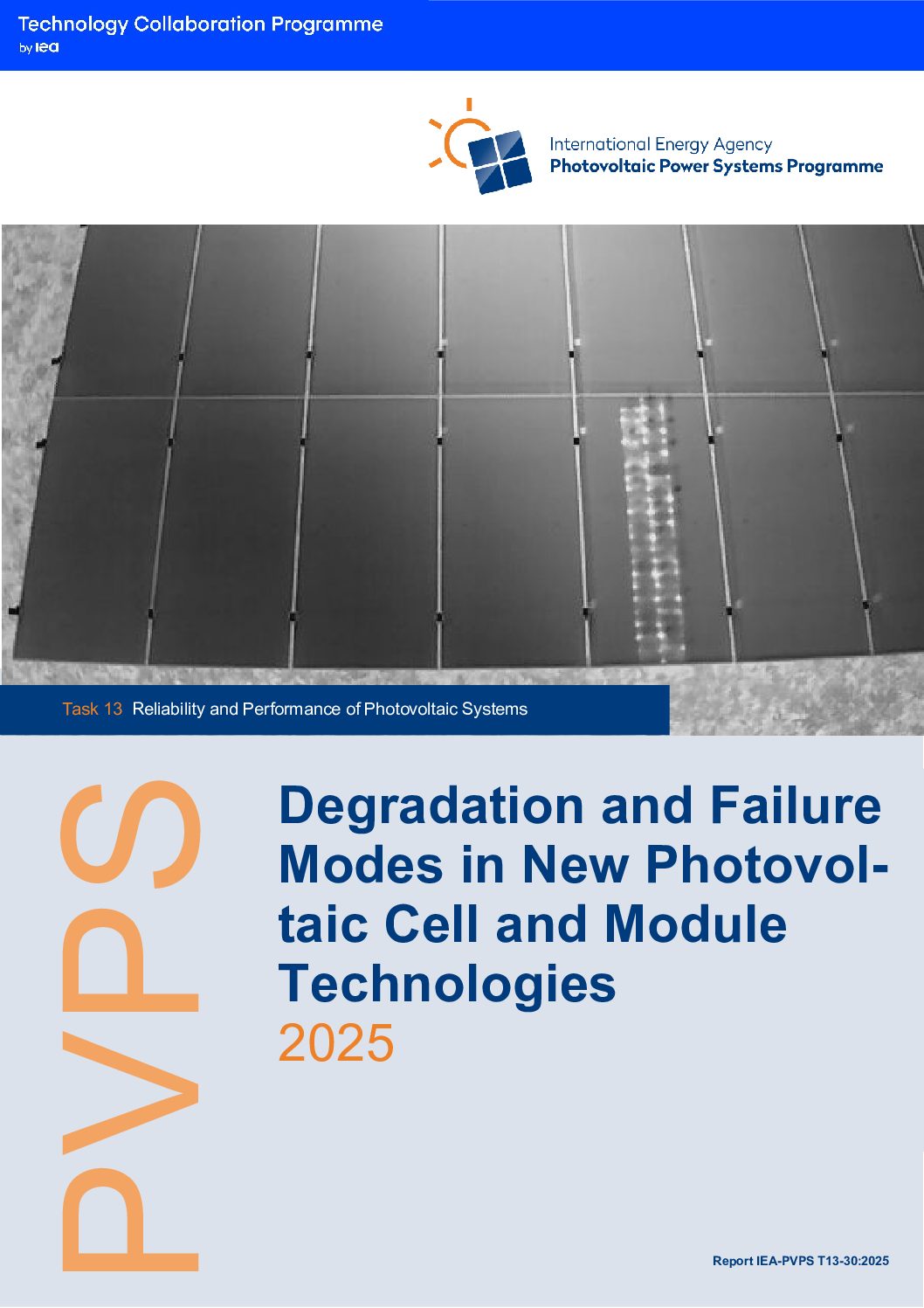February 2025
This detailed analysis by Task 13, provides essential insights into the reliability and performance of cutting-edge photovoltaic technologies, focusing on the degradation and failure modes affecting new solar cells and modules, including perovskite-based technologies.
The report explores several key areas of photovoltaic degradation and reliability, presenting both the challenges introduced by innovative technologies and the potential mitigation strategies.
The report also includes an annex, the Photovoltaic Failure Fact Sheets (PVFS), which summarises some of the most important aspects of single failures.
Key Findings:
- Innovation Impact on Degradation: Cell cracking issues are mitigated by multi-wire technology, while light and temperature-induced degradation (LID/LeTID) is addressed by using gallium-doped wafers and improved manufacturing processes.
- Potential-Induced Degradation (PID): PID mechanisms can be reduced through targeted tests and adjustments at cell, module, and system levels. UV irradiation during testing shows promise in minimizing degradation in specific cell types like TOPCon.
- UV-Induced Degradation (UVID): This occurs in some PV modules but is manageable by using UV-stable designs and encapsulation materials. However, more research is needed to fully replicate laboratory tests to field conditions.
- Encapsulation Material Challenges: Degradation in polymer encapsulation materials remains a major issue, requiring new testing standards that combine stresses like UV radiation, humidity, and temperature.
- Thin Glass Durability: Thin glass in modern modules has shown higher breakage rates, necessitating multiple-module testing under real installation conditions.
- Junction Box Reliability: Faulty bypass diode connections pose safety and performance risks. It is recommended to implement 100% testing during production and in affected installations.
- Perovskite based PV modules: There are still plenty of reliability issues for perovskite-based PV module technologies in literature. There are many possible solutions, but they have not yet been evaluated in literature when combined in a single process solving all challenges at once.
“The new report, Degradation and Failure Modes in New Photovoltaic Cell and Module Technologies, highlights key factors that impact the reliability of advanced solar technologies,” said Marc Köntges, a leading author of the report. “We identified common failure mechanisms and provide insights to improve long-term reliability and efficiency. These findings pave the way for more robust and sustainable solar energy solutions, supporting the transition to cleaner energy worldwide.”
This report also provides Photovoltaic Failure Fact Sheets (PVFS) 2025, offering practical and field-oriented information crucial for planners, installers, investors, inspectors, consultants, and insurance companies engaged in the solar energy sector.
